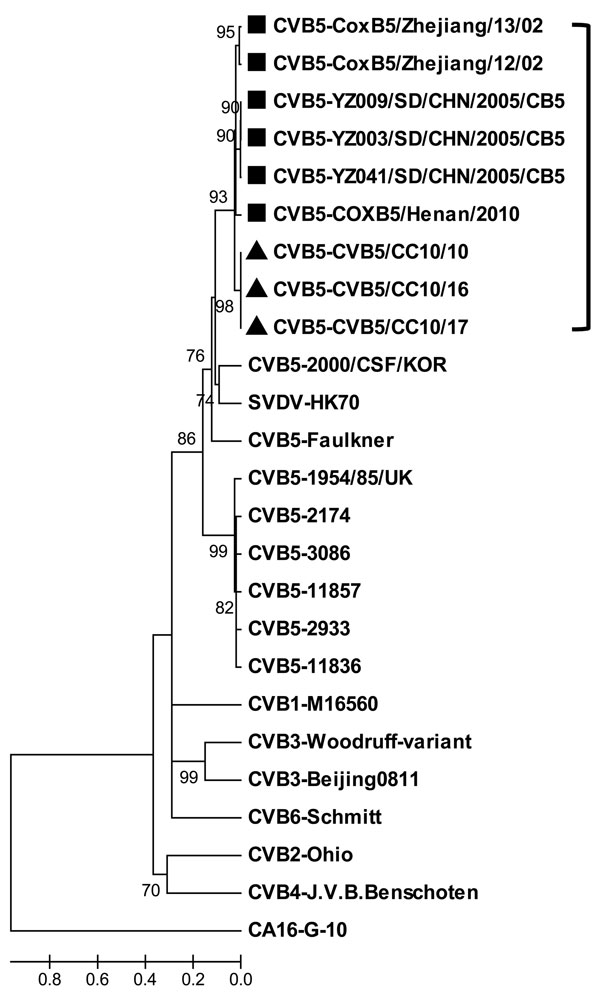Volume 18, Number 2—February 2012
Letter
Recombination of Human Coxsackievirus B5 in Hand, Foot, and Mouth Disease Patients, China
Figure

Figure. . Phylogenetic analysis of selected human coxsackievirus B (CBV) strains from different origins based on the viral protein 1 gene sequences. The neighbor-joining tree was generated by using MEGA4 software (www.megasoftware.net), and the prototype strain of coxsackievirus A (CAV) 16 was used as outgroup. The Changchun strains isolated in this study are indicated by triangles and other Chinese CBV5 strains are indicated by squares. Scale bar indicates nucleotide substitutions per site.
Page created: September 10, 2012
Page updated: September 10, 2012
Page reviewed: September 10, 2012
The conclusions, findings, and opinions expressed by authors contributing to this journal do not necessarily reflect the official position of the U.S. Department of Health and Human Services, the Public Health Service, the Centers for Disease Control and Prevention, or the authors' affiliated institutions. Use of trade names is for identification only and does not imply endorsement by any of the groups named above.